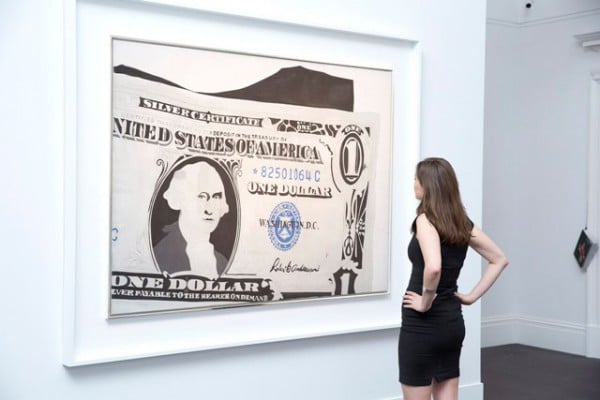
Art Demystified is a series that attempts to shed light on esoteric aspects of the art world.
What determines an artwork’s value? And why are some works so expensive? To art world outsiders, the distinctions in price can be confusing. What makes one artwork sell for $10,000 and another for $10 million—or even $100 million?
Speaking in the most basic economic terms, high demand and a shortage of supply creates high prices for artworks. Art is inherently unique because there is a limited supply on the market at any given time.
According to Augusto Arbizo, director of New York’s of 11R gallery, price is determined by “an artists exhibition history, sales history (if any), career level, and size of artwork.” He added that “sometimes, production costs are factored in as a cost that needs to be recouped.”
An exhibition at an important museum such as New York’s MoMA can have an impact on an artwork’s value. Photo: courtesy of Spencer Platt/Getty Images.
Then there are more complex factors to consider. Is the artist “hot”? What is the artist’s significance in the context of art history? Is the artwork representative of the artist’s style?
Fashionable artists who are being talked about, who are getting exhibitions with important galleries and museums and lots of coverage in the press, are more likely to sell for a high price. In the current market, people are interested in what’s new and hot, artists who are going to be the next big thing, or established, recognized, brand-name artists.
At the same time, the artist’s importance and standing in art history is an important influencing factor. “Every period in art history, you’ve got the people who write the vocabulary,” British artist Allen Jones told artnet News in April. “And then you have lots of people who learn the vocabulary and use it quite intelligently. There are lots of Fauvists apart from Matisse and Derain, but you remember the people who actually establish the rules.”
If an artist’s work has been owned by influential collectors such as Eli and Edythe Broad it will influence it’s subsequent sales price. Courtesy photographer Jerod Harris/Getty Images.
Similarly, an artists inclusion in an important gallery of museum show, or inclusion in the collections of influential and respected collectors, can have a positive impact on price.
Within an artist’s oeuvre, the factor of the style and quality of a particular work influences price too. The art market likes recognizability, and collectors are typically drawn to works that are representative of the style that the artist is most known for. And there are different indicators of desirability and quality within a particular artist’s body of work. If you spend several million on a Monet, you want to make sure you’re getting a good one and that your guests and friends will immediately recognize it as such.